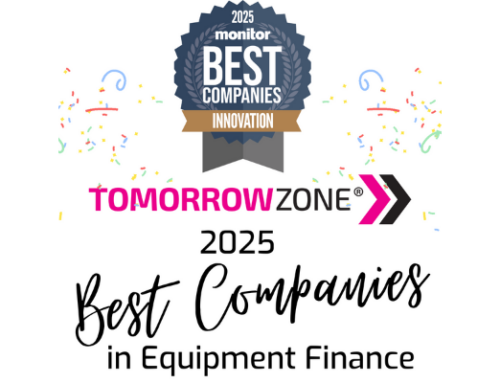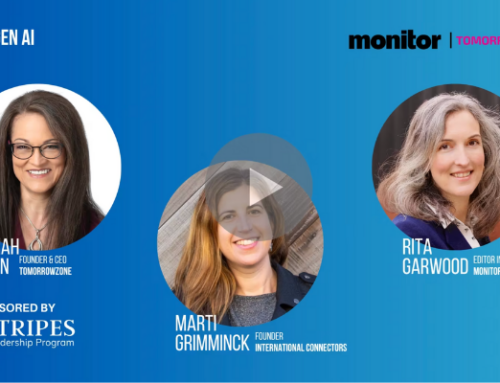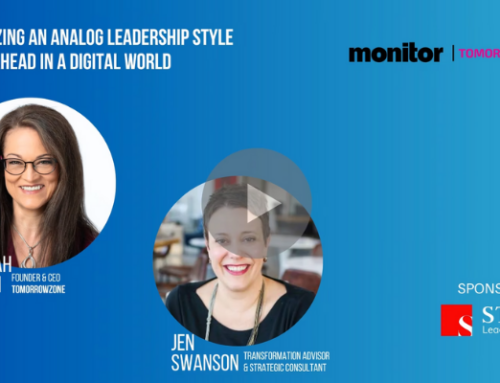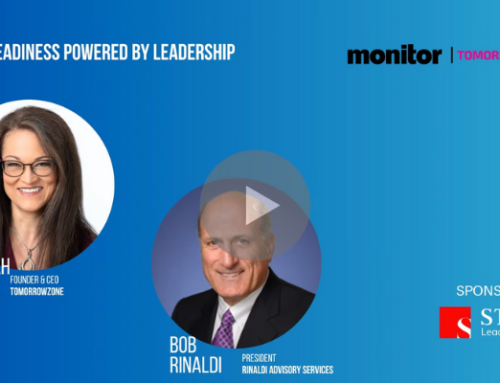
Building a technology strategy requires careful thought to architecture, much like building a house. NEFA’s (National Equipment Finance Association) NEWSLINE magazine is publishing a three-part series, “Crucial Considerations for Your Technology Strategy.”
In the Jan/Feb Industry Outlook issue, I teamed up with Kristian Dolan, CLFP, CEO of Northteq, for Part Two of this series, in an article titled “Architectural Considerations.”
In the equipment finance industry, we encounter many situations, such as duplicate applications, disconnected data sources, unfrequented systems and the inability to track key metrics. Another term for these messy situations? “Accidental Architecture.”
This happens when there is no careful planning and forethought to the strategic technology and process roadmap, which brings to mind an extreme but reminiscent example of the Winchester Mystery House in San Jose, California.
Even with rich functionality and cutting-edge technology, there was no interoperability. 65 doors to blank walls, 13 abandoned staircases, rooms built around rooms and even a door to nowhere. The property’s construction rumored to have over 100 builders and NO architect.
Stepping back to consider long-term strategy is a first step in architecting with intention.
A fundamental decision for your technology architecture is hosting. When considering, it is beneficial to understand the differences and drawbacks of different solutions. Is the Private Cloud, Public Cloud or a Platform Cloud better for your business? And why?
You have to ask yourself questions like:
- “Are there internal resources available to maintain the hardware and software?”
- “What are the security and privacy options?”
- “Is there flexibility in terms of upgrades and new capabilities?”
At a high level, there are two primary paths you can go when you are looking to implement software: Traditional Software and Platform. Making this decision is an integral part of your company’s system landscape.
After you familiarize yourself with the key differences in these two options, you can better formulate your long-term strategy. Do you want to work with one vendor and ride-the-train or do you want to harness third-party services to take ownership over defining your niche?
Cobbling together disparate systems with no interconnectivity, duplicate applications and no trustworthy critical data source can make your system landscape a bit like the Winchester Mystery house. Instead, considering key architectural fundamentals in your strategic roadmap can help you to develop a robust digital foundation for the future.
About NEFA Newsline Magazine
NEFA Newsline is the official magazine of the National Equipment Finance Association and published bi-monthly. NEFA’s members are highly skilled in their fields and believe that working together to advance the equipment leasing and financing industry is highly important and best achieved by working collectively. You can learn more about NEFA, its mission and become a member HERE.
This article was originally published in the January/February 2020 Industry Outlook issue of NEFA Newsline Magazine. See the original article HERE, pg. 30.
In our last article, we discussed ways to de-risk your technology roadmap with a big-picture view. In part two of this series, we continue to explore crucial considerations, this time with a focus on architecture. Much like building a house, building a technology strategy requires careful thought to architecture. Building on a strong foundation in the short-term will enable flexibility and resilience in the long-term.
In our consulting work, we have encountered many messy situations, symptoms include:
- Duplicate applications that serve the same purpose leading to re-work and miscommunication.
- Disparate and disconnected data sources, reducing trust, thus hampering the efficiency of your workflow.
- Systems that are implemented yet not widely adopted, which generate a lack of confidence in the data sources, decreasing efficiency, accuracy and increasing expense.
- Inability to track key metrics, gain business insight from analytics, lack of visibility into how long processes are taking, with some things “falling through the cracks.”
We call the root cause of this problem, “Accidental Architecture,” which happens when there is no careful and unified forethought to the strategic technology and process roadmap. Although an extreme example, the problem is reminiscent of the Winchester Mystery House of San Jose, CA.
The widow of William Wirt Winchester and heiress to a large portion of the Winchester Repeating Arms fortune, Sarah Winchester owned the house and began renovation in 1866. The 24,000-square-foot mansion features 160 rooms, six kitchens, 17 chimneys and 10,000 windows. The structure also features insulated walls, gas lights, modern heating and intercoms – all state-of-the-art for its time. However, even with all the rich functionality and cutting-edge technology, there was no interoperability. It is rumored to have had over 100 builders and NO architect. Ongoing construction from 1886 until Sarah’s death in 1922 yielded 65 doors to blank walls, 13 abandoned staircases, rooms built around other rooms and even a door to nowhere. The house itself is unlivable. Today it serves no useful purpose other than a historical landmark and curious tourist attraction.
Similarly, in an Accidental Architecture, a company’s system landscape evolves without much forethought about integration or flexibility. When digital is not part of the initial company strategy, or there is no direct ownership for the digital strategy, short-term solutions and band-aid fixes can pile up over time. People add applications to get their job done without thought to how it impacts upstream or downstream processes. Eventually, you end up with application sprawl, multiple systems for similar functions and no single “source of truth” for critical data sets. When your people do not trust the data in your critical systems, it leads to multiple versions of the truth, which results in duplicate efforts, re-keying, inaccuracy and other inefficiencies – all added expenses.
Stepping back to consider long-term strategy is a first step in architecting with intention. The ROI of a robust architecture doesn’t appear immediately but manifests long term. Cloud and platform selection are two primary considerations for architecting a sturdy digital foundation that enables your business to scale and be future-ready.
Cloud Considerations
A fundamental decision for your technology architecture is hosting. When considering the Cloud, it is beneficial to understand the benefits and drawbacks of different cloud solutions.
- Private Cloud – generally a software vendor’s hosted solution, in which case, the vendor maintains the software but still requires upgrades. A common approach used by traditional EF software vendors.
- Public Cloud – in this case, applications are running in a massive data center (such as AWS or Azure). When utilizing a public cloud, you still manage the software.
- Platform Cloud – This is a true, fully managed solution where everyone is on the same version of the underlying platform. Upgrades and features are delivered automatically (e.g. Zoho or Salesforce.com).
Cloud and Platform Considerations:
- Are internal resources available to maintain the hardware/software when hosted in-house?
- Cost of the hosting solution versus the direct and indirect cost of hosting in-house
- Service level agreement of the hosting provider (what if the system goes down?)
- Backup and recovery
- Security and privacy
- Data accessibility (e.g., ad-hoc reports and integration with your other systems)
- Scalability (how easily can you ramp up or down as needed?)
- Remote working capabilities
- Flexibility and agility in terms of upgrades and new capabilities (how easily will you be able to adapt your business to capture future opportunities?)
- Is the platform you are considering compatible with the outcomes you want to achieve long term?
Platform Considerations
You gain economies of scale when you leverage the same underlying technology platform for multiple solutions. A platform is like a Lego base plate. It’s the software that allows you to add components. Platforms are the technology upon which you can build other technology solutions. Another way to illustrate this is by looking at smartphones. In this case, an iPhone would be the platform, and the apps are the “add-ons.” The platform allows you to “plug and play” a variety of components. The ease at which you can “plug and play” depends on the platform you use. Some platforms, such as Salesforce.com, allow non-technical users to download apps and make them immediately and easily available. Other platforms, such as Amazon Web Services (AWS), offer additional flexibility but require more skilled developers to execute the plug and play. The following graphic is a simple illustration of the interoperability of a platform architecture.
The platform approach requires a company to be proactive in its technology solutions. It also requires a mindset of continual improvements and iterations. It’s about becoming content with the concept that you are never done and will continuously be evolving. Unlike the “never done” mystery house however, you will have relevant and interoperable features when you use a strategic architecture approach to your technology roadmap.
Historically, you might have decided to partner with one vendor and “ride that train” while hoping you end up where you want to go. The single-vendor approach is not necessarily a flawed concept, and for many, this might be the best approach. However, if you’re going to harness services made available by third parties and want to take ownership over defining your niche, your processes and creating a differentiating customer experience, the platform approach is for you.
At a high level, there are two primary paths you can go when you are looking to implement software:
- Traditional Software – With this approach, you partner with a single vendor to purchase and implement their software. If you need customizations, you engage with that vendor to customize based on your needs and their strengths. You look to that vendor for future upgrades and industry best practices.
- Platform – With this approach, you’re not committing to a single vendor. You are implementing a platform and then orchestrating how the components will work together.
Let’s revisit the smartphone metaphor. You and your friend might both have iPhones. However, the apps you have loaded can be completely different from each other. In this platform approach illustration, the iPhone is the platform, and the apps the add-ons.
Here are a few examples of platforms being used across the equipment finance industry:
- Salesforce
- Zoho
- Google Cloud
- AWS
- Azure
Cloud-native platforms allow interoperability, rapid development and adaptation. The ability to choose the most relevant features for your business in a plug-and-play fashion helps you avoid the door to nowhere scenarios. Much like building a physical structure, careful thought to architecture and good foundations enable flexibility and resilience.
Cobbling together disparate systems with no interconnectivity, duplicate applications and no trustworthy critical data source can make your system landscape a bit like the Winchester Mystery house. Instead, considering key architectural fundamentals in your strategic roadmap can help you to develop a robust digital foundation for the future – allowing you to pivot, adjust and flex your business in changing times. A strategic approach to your technology architecture, especially your decisions about hosting and platforms, can help you operate more efficiently, deliver on your customer experience promises, and build flexibility and resiliency.
For more information about what to consider as you form your equipment finance technology strategy, click here. The Equipment Finance Software Guide is a free e-book by Deborah Reuben and Kristian Dolan.
ABOUT THE AUTHORS: Deborah Reuben, CLFP is CEO of TomorrowZone®, and Kristian Dolan, CLFP is CEO of Northteq.





